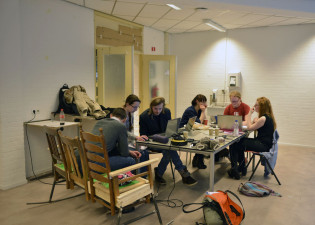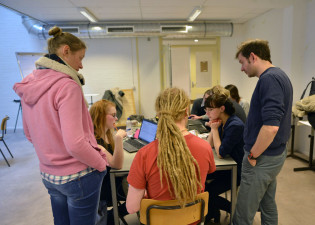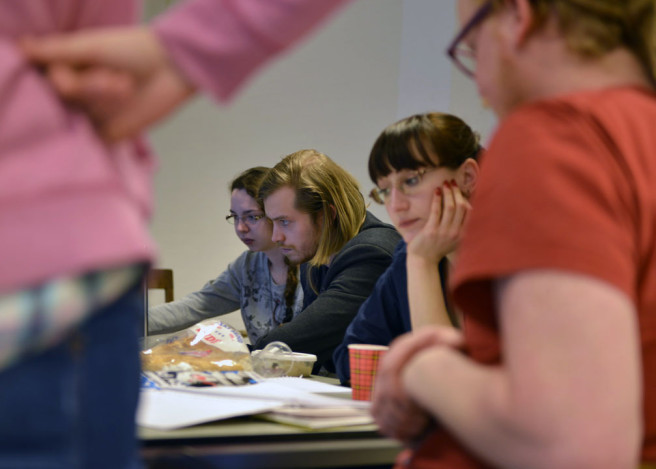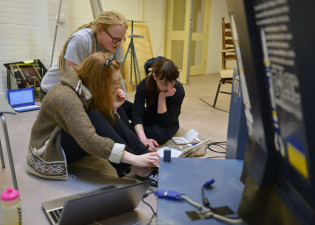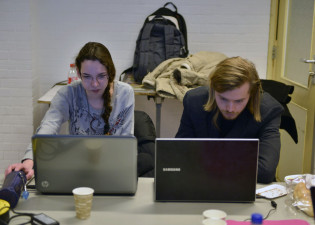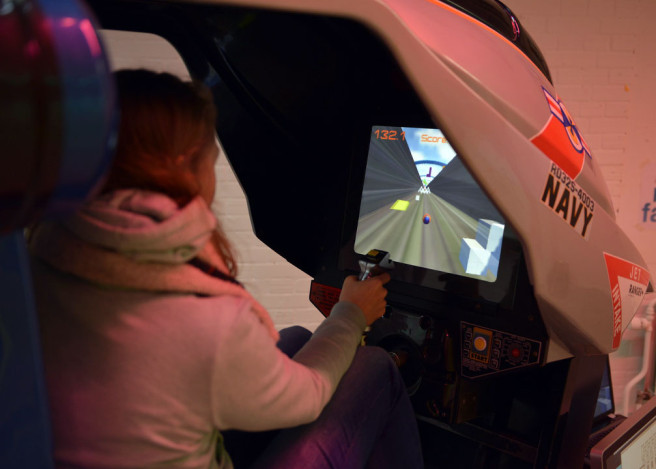The Art of Gaming: Designing Immersive Art
Transforming the Sega G-loc arcade machine into an artistic experience.
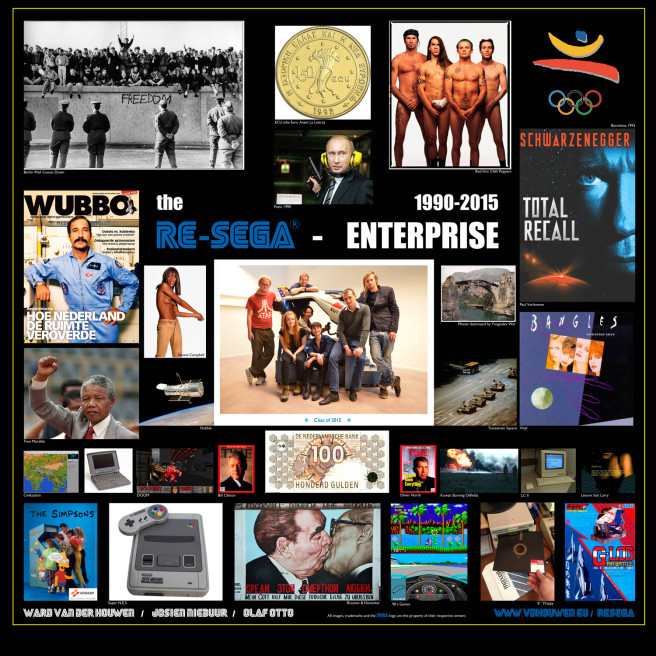
Instructors: Ward van der Houwen (lecturer), Josien Niebuur and Olaf Otto. Programmers Josien Niebuur, Ward van der Houwen en Tim Meulenbroek.
Once, Arcade Machines ruled the earth. That was before home gaming became affordable and other arcade hall machines (slot machines) prove far more profitable. Yet arcade machines like Sega G-loc are formidable devices that were built to last centuries and give the user a maximal immersive experience using the state of the art technology of that time.
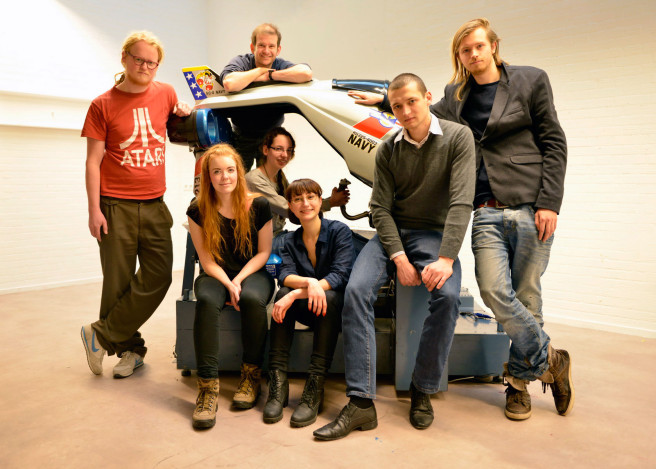
The Re-Sega student team from left to right Sjors Hoogerdijk, Katie Corcoran Kenna, Myself (not a student!), Danja Politis, Anna Smetanenko, Asen Hristozov and Frank de Boer.
The Sega G-Loc Deluxe is an air combat flight simulator from 1990 with a rocking cabinet powered by two linear motors. Stereo speakers, flash lights and a color screen immerse the pilot in a F14-TomCat air to air combat scenario, controlled by flight stick, hand throttle, vulcan gun and missiles.
This project opened this impressive tool to students: to program their own immersive artistic experience. They had one week in which in two teams could use any interactive visualization tool to convert the former flight simulator into an immersive experience. To this end, the internal monitor is replaced by a normal TFT-screen, and all actuation and sensing will be handled by a Arduino controller.
What was asked
The object of the project was to create an immersive artistic experience, respecting the context of the SEGA G-Loc original game, arcade machines in general, 8 and 16-bit technology, around 1990 historic events and other technology.


